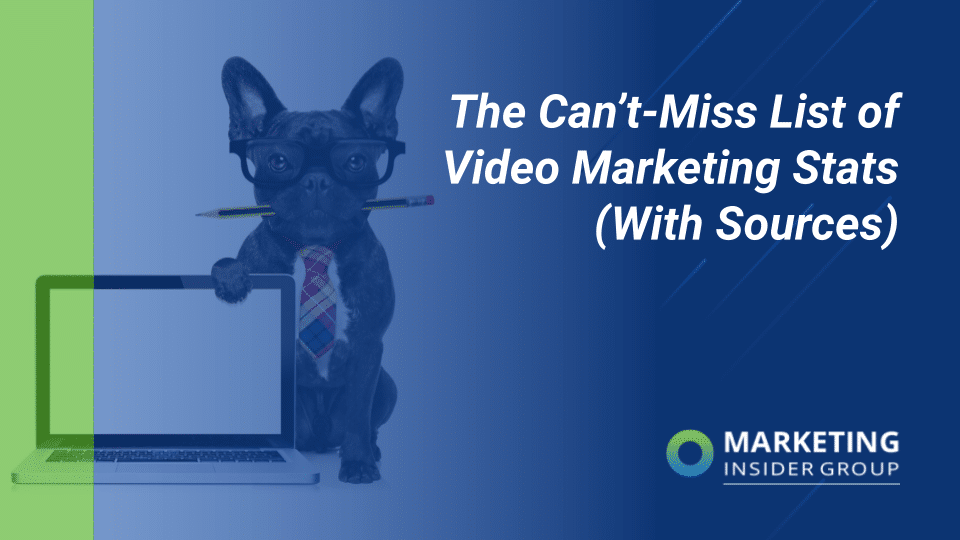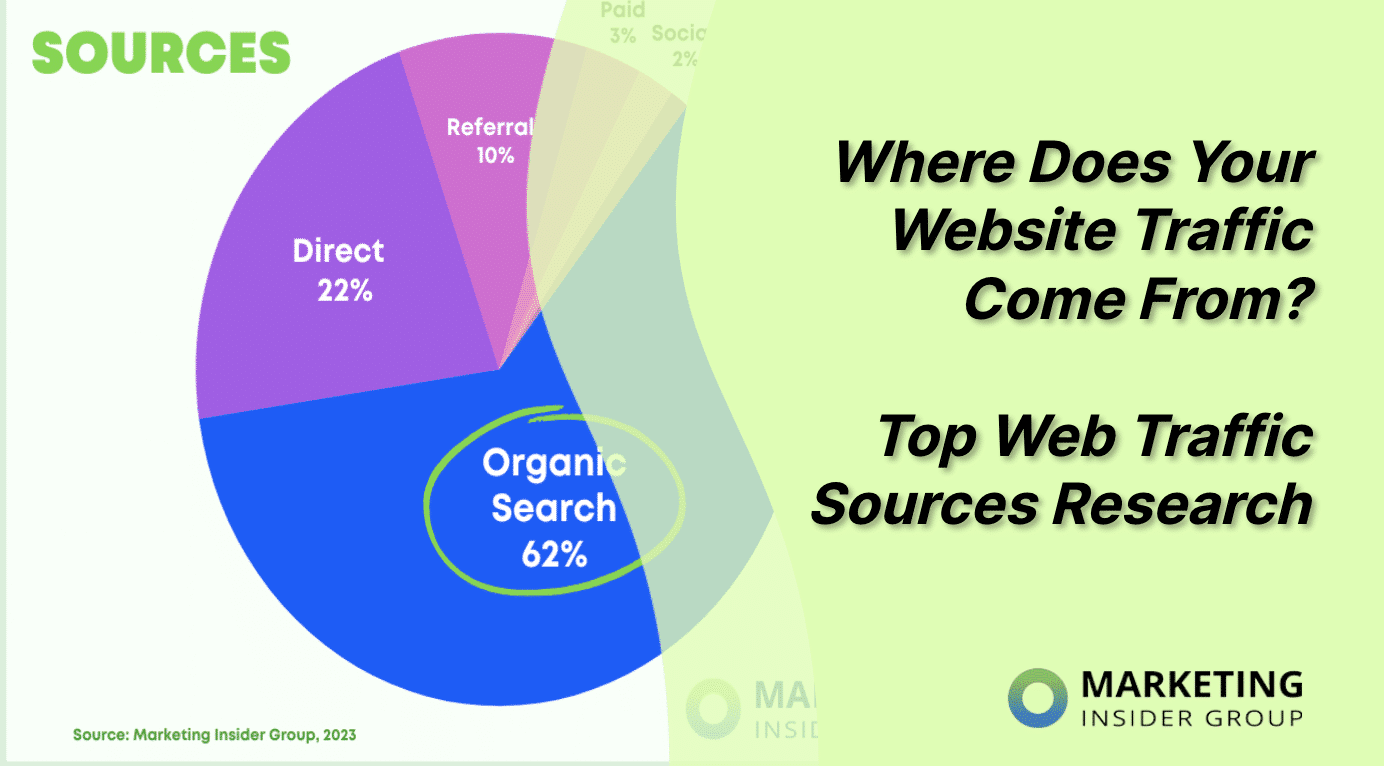
Where Does Your Website Traffic Come From? Top Web Traffic Sources Research
Digital marketing is table stakes for companies that want to attract and convert new customers, but nearly half of all companies (45%) don’t know the ROI of their marketing strategy. Why? Largely because they don’t track the source of their website’s traffic and leads sources. This leads to a misallocation of resources and a misunderstanding of how buyers navigate the web.
Without even knowing it, they’re likely putting time, money, and effort into marketing channels like social media and paid search that simply don’t deliver traffic, leads or ROI.
I have seen this so often: a founder launches an amazing product, builds a great website, hires a sales team, and then hires a social media intern. (Because all the kids are on the ‘gram these days!) Or they hire a paid media agency to display banner ads.
Readers of our blog know I love to say that banners have 99 problems and a click ain’t one!
That’s why we recently did some intensive research to learn where does the best value in marketing time, budgets and efforts really come from. We sought to answer: what are the top sources of traffic and leads on your website? And how have those sources changed over time time and between B2B and B2C sectors.
Here’s what we found: Organic search is still the top source of traffic and leads for most companies. And, the companies that focus their investment on content marketing to grow organic inbound traffic, see higher ROI and conversion rates.
Not only is content marketing cheaper to execute, it earns compounding results over time, establishes brand authority, and grabs the attention of buyers genuinely interested in what you have to offer.
As for paid search? It has its benefits, too— most notably that it delivers quicker results. But the cost of those results will add up if you want to maintain them over time. Not to mention that a staggering 94% of users skip right over the search ads to see the organic results.
Highlights from our Website Traffic Sources Report:
- Organic search accounts for more than 60% of all web traffic across the board
- Top blogs get 67% of their traffic from organic search
- More than 90% of website traffic is “organic” (Search plus Referral plus Direct traffic)
- Paid search, email, and social media account for less than 10% of all traffic
- Web traffic sources across B2B and B2C sectors are largely similar (a little surprising right?)
In this guide, we’ll share the full insights of our research as well as two important ways you can maximize the content marketing ROI you earn across web traffic sources: tracking site traffic with Google Analytics, and creating consistent, high-value content for your target audiences.
Let’s dive in.
What Are The Main Web Traffic Sources?
Before we get to traffic breakdowns, let’s look at the top web traffic sources businesses use right now in their digital marketing strategies. These are the five sources we’ll analyze in the research that follows:
- Direct – Visitors arrive directly on your site (not by clicking a link)
- Organic Search – Users click to a site from search engine results pages
- Social media – Web visitors are driven to a site by links on social media platforms
- Email – Traffic is driven by links included in direct email
- Paid – Traffic driven by paid search (PPC) or Digital Display banner ads
Given that users leverage 10 or more channels to interact with brands throughout their purchase process, the best approach is to build a multi-channel digital strategy driving traffic from several sources across the web.
In the next sections, we’ll dive deeper into some source breakdowns. But before that, let’s cover the clear web traffic winner across the board — organic search.
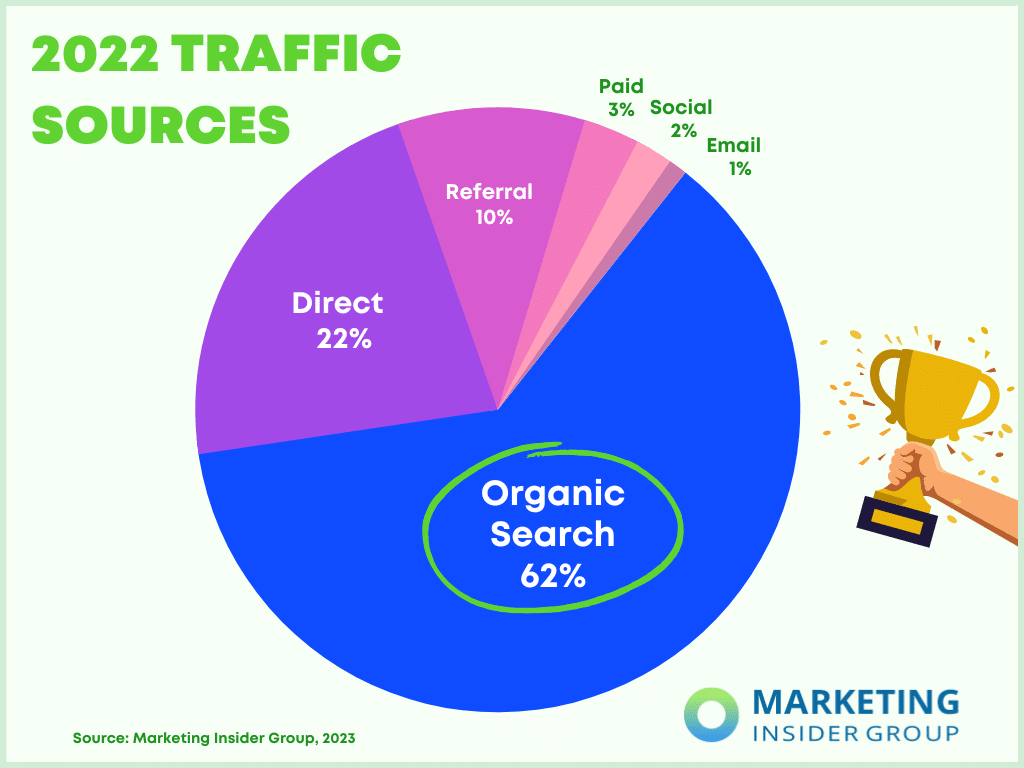
Organic Search: The Web Traffic Winner
We started by analyzing organic search traffic for our own website, our clients’ sites, and from a curated set of top industry research on the subject. What we found was incredibly consistent (and encouraging for brands focused on content marketing) — on average, organic search accounts for more than 60% of all web traffic (66% for MIG clients only. 62% on average for all the websites in our larger analysis).
To put this percentage into further context, Google — which accounts for more than 90% of all search engine queries — drives 8X more traffic than all social media platforms combined.
Next, let’s take a look at how search and other key web traffic sources stack up by industry, and in B2B vs. B2C sectors…
The Declining Role of Social, Paid and Email on Website Traffic
As the chart below clearly shows, organic search is not only the largest driver of website traffic, it is also growing in importance. We have seen website traffic grow in general every year since the internet was launched. We have also seen more people using search engines (8.5 billion searches per day). That has led to the growth of organic search, direct, and referral traffic. It has also led to a decline in the importance of Social, Paid, and Email as a source for traffic and leads. Let’s look at the data:
- Organic contributed 62% of the traffic in 2022 for our cohort (up from 58% in 2019)
- Direct delivered 22% of website traffic (up from 15% in 2019)
- Referral traffic is also up from 3% to 10% in 2022 (almost 3x more important)
- Social media declined from 7% in 2019 to only 2% in 2022
- Paid Media traffic is also down from 10% in 2019 to 3% in 2022
- Email is also down from 10% in 2019 to just 3% of website traffic
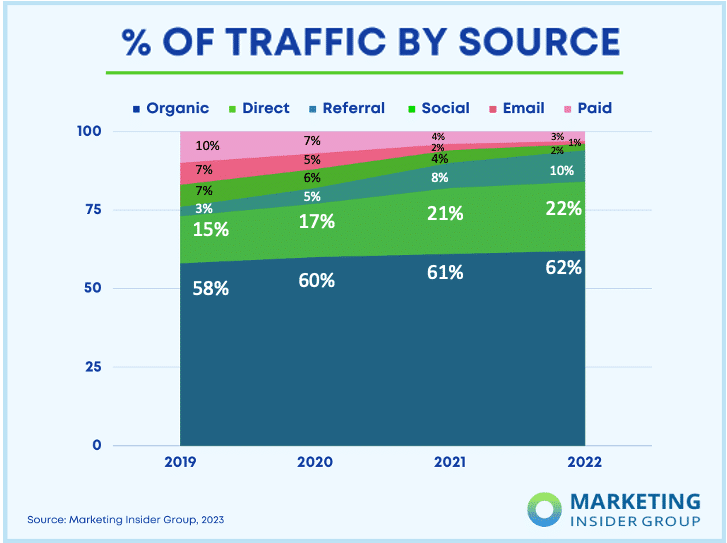
Now this doesn’t cover the whole picture. We have to consider conversions. So we’ll cover the conversion rate of each source below as well.
Top Traffic Sources for B2B vs. B2C
Next, we looked at how traffic sources compare across B2B and B2C. As a digital marketer, you know that B2B and B2C require different approaches in many ways, but as it relates to web traffic, their results were fairly similar.
I was somewhat surprised by this. Don’t you think consumer-focused brands and e-commerce companies just get all their new customers through paid media ads and viral social media posts? Well, it turns out, this is another marketing myth.
If we’re really looking for differences, B2B earns a noticeable but still only slightly higher traffic percentage from search (64% vs. 60%). Across both sectors, organic search considerably outperforms direct traffic (by 2-3X), as well as email, social media, and paid search (all of which make up only a fractional percentage of traffic totals).
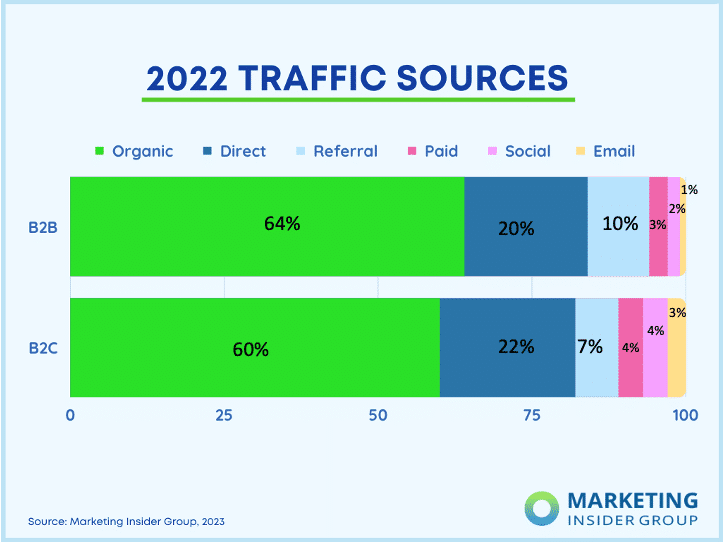
Web Traffic Sources Analysis by Industry
Our sample size did not allow us to drill down into web traffic sources by industry. So we looked to the folks at SimilarWeb who analyzed 3.25 billion website visits across 450,000 website domains.
What they found lines up with our research as well. Organic search is consistently the top source of traffic (it ranked #1 for all of the 12 industries we researched), and some industries lean on it more heavily than others.
The five industries that earn the highest web traffic percentages from organic search are Medical (87%), Travel (72%), Design & Development (69%), Personal Finance (67%), and Food & Recipes (60%). Percentages for most other industries were well over 50%, with the lowest only falling to 45% for Crypto.
Direct traffic came in a clear second place, at an average of 32% across all industries. Real Estate (42%), Photography (39%), Technology (37%), and Crypto (37%) earned the highest shares of direct traffic, after a drop-off to the next highest industry, Food & Recipes, at 25%.
For Fashion & Beauty and Business & Marketing, social media accounts for a notable portion of traffic (11% and 18%, respectively), but only accounted for an average of 4% across the other 10 industries. Email and paid search came in a distant last, accounting for only 1% of traffic overall.
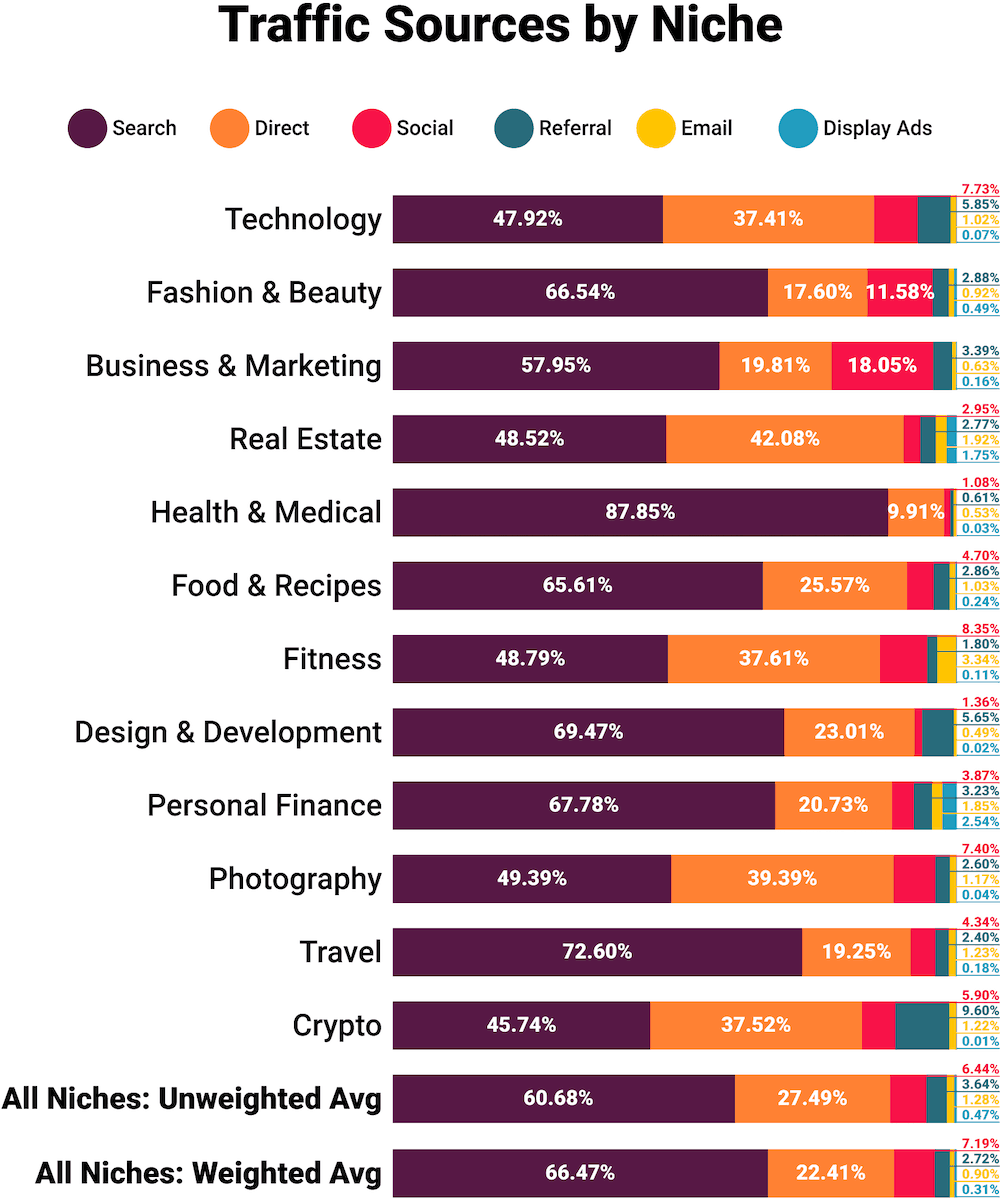
What About Conversion Rates For Each Traffic Source?
We thought it worthwhile to look at conversion rates across web traffic sources but found that when averaged, they largely hover around the digital marketing status quo of 2.5% (give or take a tenth or two).
It’s important to remember two key takeaways when considering this data. First, individual companies can and do boost their conversion rates above these averages with stellar strategies and consistent execution. If you feel like 2.5% is menial, know that you can do better.
Second, the reality is that top web traffic sources do generally convert new leads at a single-digit percentage rate. To generate the number of leads you need to keep your pipeline full, you should be leveraging multiple digital channels to reach your target audience.
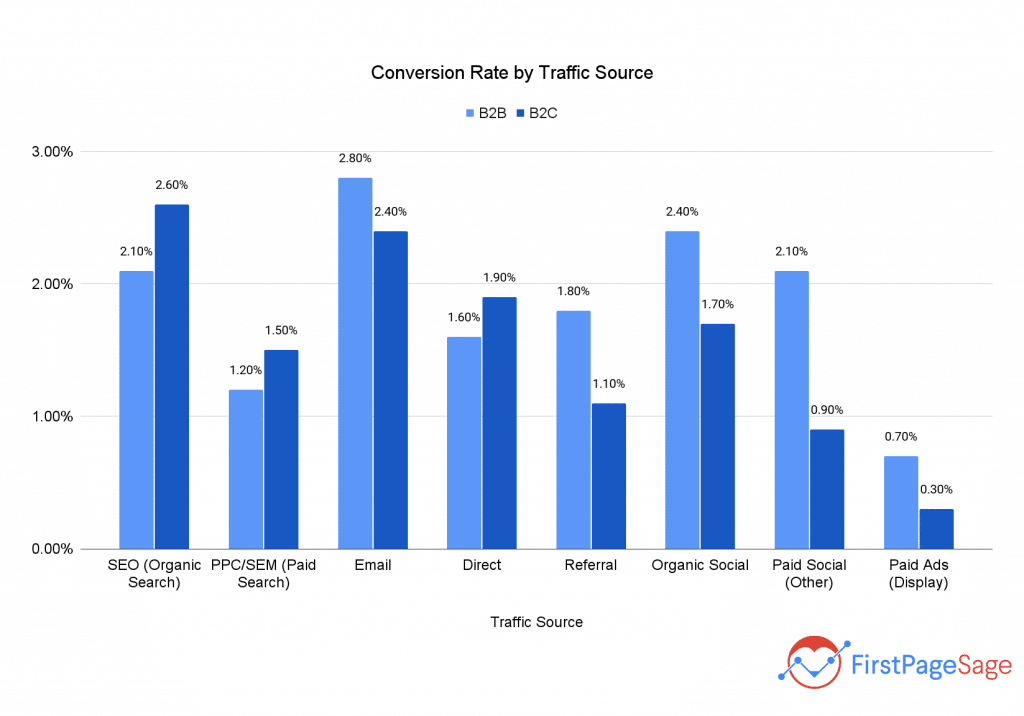
Optimize Your Web Traffic Sources by Tracking
While this data gives us good insight into trends and averages, it’s essential to know how your unique business performs across web traffic sources. Tools like Google Analytics and WordPress plugins can automate traffic tracking through your website.
These tools put web traffic data into user-friendly, visual data reports your marketing team can use to continually refine and improve your strategy based on target audience behavior.
We like to use Semrush to prove how content marketing delivers success for us and all our clients:

Content: The Key to Success
Great content is the universal key to unlocking traffic potential from every important source — it’s what engages new audiences, builds trust with potential customers, and keeps web visitors coming back for more after their first visit to your site.
The best thing about content? You can create it for one channel, like your blog, then repurpose it in other places, like social media and email.
Content is what builds strong search visibility for your brand and enables you to deliver value to your audience before they ever make a purchase.
To succeed in today’s competitive digital marketing landscape, you need a full-scale content strategy that includes frequent publishing (multiple times per week). If you’re feeling like that’s a daunting task for your internal team, you’re not alone.
Over 70% of companies now outsource their content in some way. Hiring an agency allows you to execute at the level today’s market requires. At the same time, you can stay focused on what matters most for your business — serving customers.
Marketing Insider Group’s team of expert writers can deliver you optimized, ready-to-publish blog content every single week for a year (or more). Check out our SEO Blog Writing Service or schedule a free 15-minute consultation with me to learn more.


